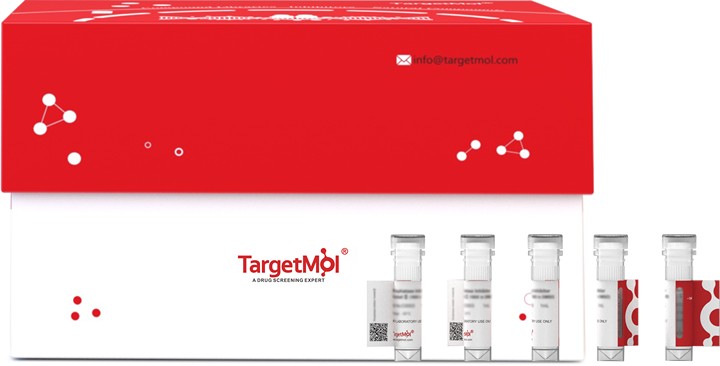- 全部删除
 您的购物车当前为空
您的购物车当前为空
Cystatin SA Protein, Human, Recombinant (His)

Cystatin-SA, also known as Cystatin-2, Cystatin-S5 and CST2, is a secreted protein which belongs to thecystatin family. Cystatin-2 / CST2 is expressed in submandibular and sublingual saliva but not in parotid saliva (at protein level). It is also expressed in submandibular gland and parotid gland. The cystatin superfamily encompasses proteins that contain multiple cystatin-like sequences. Some of the members are active cysteine protease inhibitors, while others have lost or perhaps never acquired this inhibitory activity. There are three inhibitory families in the superfamily, including the type 1 cystatins (stefins), type 2 cystatins and the kininogens. The type 2 cystatin proteins are a class of cysteine proteinase inhibitors found in a variety of human fluids and secretions, where they appear to provide protective functions. The CST1, CST2, CST4, and CST5 are expressed in differential, tissue-specific patterns. Expression of CST2 and CST5 is restricted to the submandibular and parotid glands, while CST1 and CST4 are expressed in these tissues and in the lacrimal gland.

Cystatin SA Protein, Human, Recombinant (His)

| 规格 | 价格 | 库存 | 数量 |
|---|---|---|---|
| 100 μg | ¥ 3,820 | 5日内发货 |
产品信息
| 生物活性 | Activity testing is in progress. It is theoretically active, but we cannot guarantee it. If you require protein activity, we recommend choosing the eukaryotic expression version first. |
| 产品描述 | Cystatin-SA, also known as Cystatin-2, Cystatin-S5 and CST2, is a secreted protein which belongs to thecystatin family. Cystatin-2 / CST2 is expressed in submandibular and sublingual saliva but not in parotid saliva (at protein level). It is also expressed in submandibular gland and parotid gland. The cystatin superfamily encompasses proteins that contain multiple cystatin-like sequences. Some of the members are active cysteine protease inhibitors, while others have lost or perhaps never acquired this inhibitory activity. There are three inhibitory families in the superfamily, including the type 1 cystatins (stefins), type 2 cystatins and the kininogens. The type 2 cystatin proteins are a class of cysteine proteinase inhibitors found in a variety of human fluids and secretions, where they appear to provide protective functions. The CST1, CST2, CST4, and CST5 are expressed in differential, tissue-specific patterns. Expression of CST2 and CST5 is restricted to the submandibular and parotid glands, while CST1 and CST4 are expressed in these tissues and in the lacrimal gland. |
| 种属 | Human |
| 表达系统 | HEK293 Cells |
| 标签 | C-His |
| 蛋白编号 | P09228 |
| 别名 | MGC71924,cystatin SA,CST2 |
| 蛋白构建 | A DNA sequence encoding the human CST2 (NP_001313.1) (Met 1-Ala 141) was fused with a polyhistidine tag at the C-terminus. Predicted N terminal: Trp 21 |
| 蛋白纯度 | > 98 % as determined by SDS-PAGE |
| 分子量 | 16 kDa (predicted); 16 kDa (reducing conditions) |
| 内毒素 | < 1.0 EU/μg of the protein as determined by the LAL method. |
| 缓冲液 | Lyophilized from a solution filtered through a 0.22 μm filter, containing PBS, pH 7.4. Typically, a mixture containing 5% to 8% trehalose, mannitol, and 0.01% Tween 80 is incorporated as a protective agent before lyophilization. |
| 复溶方法 | A Certificate of Analysis (CoA) containing reconstitution instructions is included with the products. Please refer to the CoA for detailed information. |
| 存储 | It is recommended to store recombinant proteins at -20°C to -80°C for future use. Lyophilized powders can be stably stored for over 12 months, while liquid products can be stored for 6-12 months at -80°C. For reconstituted protein solutions, the solution can be stored at -20°C to -80°C for at least 3 months. Please avoid multiple freeze-thaw cycles and store products in aliquots. |
| 运输方式 | In general, Lyophilized powders are shipping with blue ice. |
| 研究背景 | Cystatin-SA, also known as Cystatin-2, Cystatin-S5 and CST2, is a secreted protein which belongs to thecystatin family. Cystatin-2 / CST2 is expressed in submandibular and sublingual saliva but not in parotid saliva (at protein level). It is also expressed in submandibular gland and parotid gland. The cystatin superfamily encompasses proteins that contain multiple cystatin-like sequences. Some of the members are active cysteine protease inhibitors, while others have lost or perhaps never acquired this inhibitory activity. There are three inhibitory families in the superfamily, including the type 1 cystatins (stefins), type 2 cystatins and the kininogens. The type 2 cystatin proteins are a class of cysteine proteinase inhibitors found in a variety of human fluids and secretions, where they appear to provide protective functions. The CST1, CST2, CST4, and CST5 are expressed in differential, tissue-specific patterns. Expression of CST2 and CST5 is restricted to the submandibular and parotid glands, while CST1 and CST4 are expressed in these tissues and in the lacrimal gland. |




